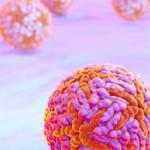
Research Topics
The RNA Molecular Biology Group (RMBG) studies the impact of RNA binding proteins (RBPs) on posttranscriptional gene regulation (PTGR). PTGR summarizes various processes acting upon coding and non-coding RNA and includes RNA maturation, ribonucleoprotein (RNP) assembly, transport, translation, and turnover.
The recent introduction of large-scale quantitative methods, such as next-generation sequencing (NGS) and modern mass spectrometry (MS), allows for the first-time determination of the functional impact of RBPs on a systems-wide level and has sparked a renewed interest in the systematic characterization of PTGR processes. Members of the RMBG focus on elucidating the function and molecular mechanisms of RNA binding proteins involved in RNA transport, RNA stability and turnover, and RNA translation. Broadly, we are pursuing four interdependent projects:- Investigate the role of predicted AU-rich element binding proteins in determining mRNA turnover.
- Identify and characterize the interaction network of mRNA binding transport and shuttling proteins and their RNA targets at a sequence and functional level.
- Investigate the impact of select RBPs on translation initiation and elongation.
- Integrate the results from our systems-level determination of cis-acting elements into high-resolution maps of posttranscriptional regulatory events.
Biography
Markus Hafner, Ph.D., joined the Laboratory of Muscle Stem Cells and Gene Regulation as an Investigator in 2014. Before his appointment at the NIAMS, he was a postdoctoral fellow in the Laboratory of Dr. Thomas Tuschl at the Rockefeller University in New York. There he worked on mechanisms of gene silencing by small RNAs, and developed methods to characterize post-transcriptional gene regulation by RNA binding proteins.
Before coming to the United States, Dr. Hafner lived in Germany, Mexico, China, Greece, and Honduras. He obtained an M.Sc. in chemistry in 2002 and a Ph.D. in biochemistry in 2007 from the University of Bonn, Germany. His graduate work under Dr. Michael Famulok focused on the use of RNA aptamers to select small molecule inhibitors for cytohesins, a family of guanosine exchange factors, which revealed their role in the insulin signaling pathway.
In his laboratory at NIAMS, Dr. Hafner will focus on dissecting the composition of ribonucleoproteins (RNPs) involved in cellular RNA transport and control of RNA stability. This is a prerequisite for understanding the consequences of dysregulation and/or mutation of RNA-binding proteins (RBPs), and/or their target RNA-binding sites in disease.
Selected Publications
- Wan Y, Anastasakis DG, Rodriguez J, Palangat M, Gudla P, Zaki G, Tandon M, Pegoraro G, Chow CC, Hafner M, Larson DR. Dynamic imaging of nascent RNA reveals general principles of transcription dynamics and stochastic splice site selection. Cell. 2021;184(11):2878-2895.e20.
- Anastasakis DG, Apostolidi M, Garman KA, Polash AH, Umar MI, Meng Q, Scutenaire J, Jarvis JE, Wang X, Haase AD, Brownell I, Rinehart J, Hafner M. Nuclear PKM2 binds pre-mRNA at folded G-quadruplexes and reveals their gene regulatory role. Mol Cell. 2024;84(19):3775-3789.e6.
- Benhalevy D, Anastasakis DG, Hafner M. Proximity-CLIP provides a snapshot of protein-occupied RNA elements in subcellular compartments. Nat Methods. 2018;15(12):1074-1082.
- Sarshad AA, Juan AH, Muler AIC, Anastasakis DG, Wang X, Genzor P, Feng X, Tsai PF, Sun HW, Haase AD, Sartorelli V, Hafner M. Argonaute-miRNA Complexes Silence Target mRNAs in the Nucleus of Mammalian Stem Cells. Mol Cell. 2018;71(6):1040-1050.e8.
- Muys BR, Shrestha RL, Anastasakis DG, Pongor L, Li XL, Grammatikakis I, Polash A, Chari R, Gorospe M, Harris CC, Aladjem MI, Basrai MA, Hafner M, Lal A. Matrin3 regulates mitotic spindle dynamics by controlling alternative splicing of CDC14B. Cell Rep. 2023;42(3):112260.
Related Scientific Focus Areas


Molecular Biology and Biochemistry
View additional Principal Investigators in Molecular Biology and Biochemistry


This page was last updated on Wednesday, July 16, 2025